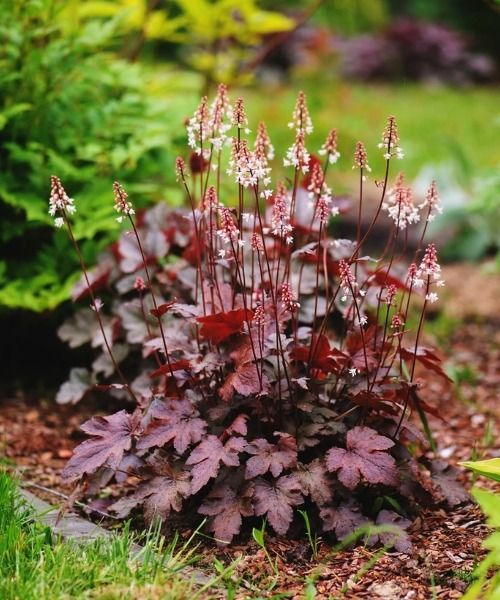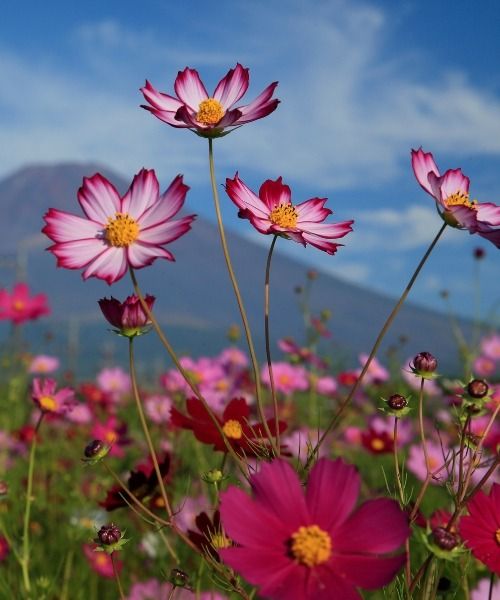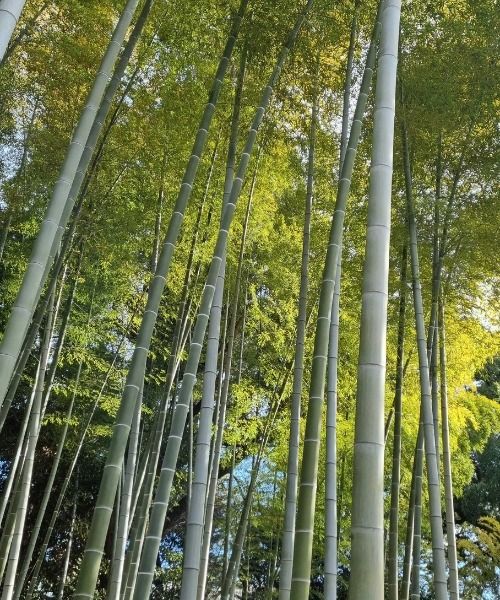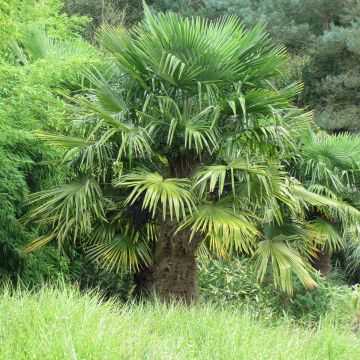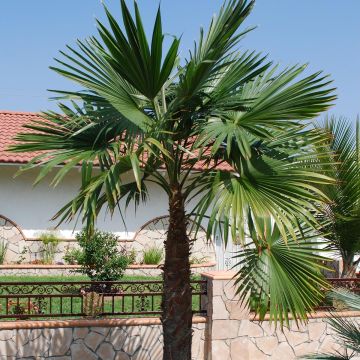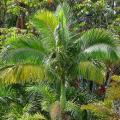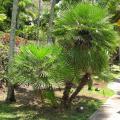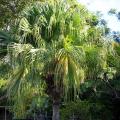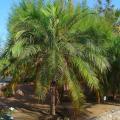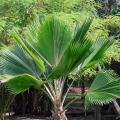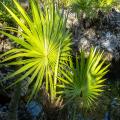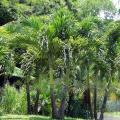Trachycarpus
Does this plant fit my garden? Set up your Plantfit profile →
Available in 4 sizes
Available in 1 sizes
Available in 3 sizes
Available in 1 sizes
All Trachycarpus fans know of the hardy Trachycarpus fortunei, also known as the Chinese Windmill Palm due to its trunk covered in fibers, or formerly as Chamaerops excelsa. It is easy to grow even in cool and humid climates. However, there are other species and varieties of Trachycarpus that are very different, ranging from dwarf bushes to giant palm trees, which are just as easy to cultivate. Among them is the Trachycarpus wagnerianus, just as hardy as the previous one but more compact, better tolerant of wind and dry soils: it is on the verge of dethroning its famous cousin in the hearts of gardeners. The Trachycarpus nanus, as its name suggests is small and well suited to pot cultivation. Owners of large gardens will appreciate the impressive Trachycarpus takil, adorned with magnificent round fronds and capable of reaching a height of 12 meters (39 feet).
Trachycarpus are hardy and robust mountain palm trees, not very demanding in terms of soil, appreciated by all gardeners who wish to create an exotic atmosphere in regions with a cool climate and harsh winters. While their fronds are admired by all, their unusual flowering is an integral part of their charm: Trachycarpus are mostly dioecious, so there are male and female plants. The inflorescences emerge every year among the leaves. They are short and highly branched, loaded with bright yellow flowers, followed on female subjects by an abundance of black-purple fruits.
Trachycarpus are most enhanced when grouped in sets of 3 plants surrounded by evergreen ground cover. The more compact ones make magnificent specimens on the terrace or balcony, planted in a carefully chosen large container.
To help you to make your choice, also check out our selection of hardy palm trees.
Haven't found what you were looking for?

































